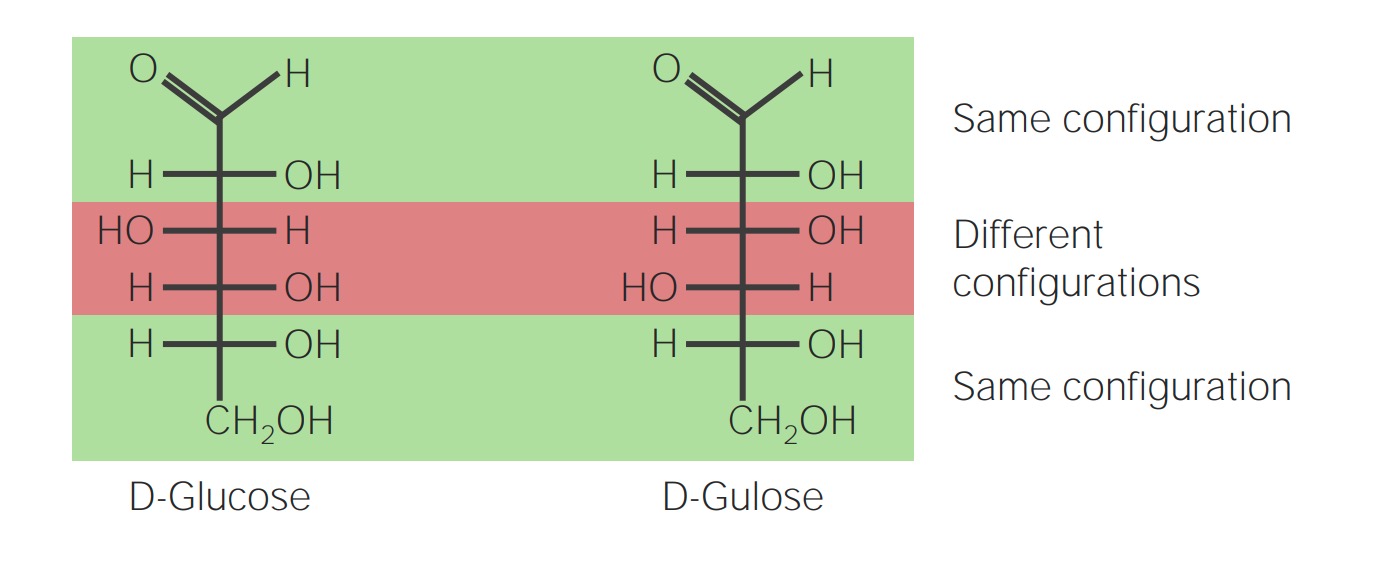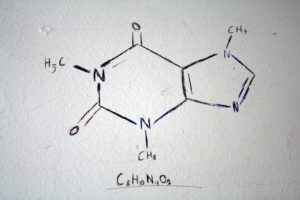Playlist
Show Playlist
Hide Playlist
Carbohydrates – Carbonyl Compounds
-
Slides 07 Chemistry Advanced Le Gresley.pdf
-
Download Lecture Overview
00:01 It’s a very important or it’s rather very important to consider carbohydrates in this context because we’re now going to be looking at the biological application of hemiacetal formation. Up here, shown here a brief equation that shows the conversion of carbon dioxide and water into oxygen and carbohydrate. Note, how I’ve actually restricted the term and called it (CH2O)n. This refers to the fact that, of course, the one we are familiar with is C6H12O6, which is glucose, but let’s have a look at where we derive the name carbohydrate from. If we take water away from that equation (CH2O)n, we are left with carbon. Hence, the term carbohydrate or hydrates of carbon. And as you should be aware, this transformation is photosynthesis which occurs via the chlorophyll co-factor in plant enzymes. So, those carbohydrates D-glucose in the sense C6H12O6 which is dextrorotationary, remember what we said about stereochemistry right at the beginning in Module I, we talked about stereochemistry. So, D-glucose will rotate the plane of polarised right of light to the right. This is D-glucose and most sugars, naturally occurring sugars, are D. 01:29 Now, this is the structure. We see we have here the six carbons and we have, as you can see, multiple OH groups offered. Crucially though, the functional group which I want to draw your attention to is that which is in the 1 position and that is our aldehyde and remember what we said about aldehydes reacting. 01:48 The straight line projection I’ve shown there, otherwise known as a Fischer projection, is actually not necessarily a true representation of the glucose in space. And so, I’ve redrawn in the centre and it’s a in a better sort of arrangement of how it folds around on itself shown there. Note and pay attention to the alcohol in the 5 position on the Fischer structure and how it appears in the cyclised structure there. 02:19 What happens, in this instance, is that it’s possible to form so called pyran rings or pyranose rings. So, if you look at the bottom part and also to the left hand side, you will see that there are two possible cyclic structures, okay? And so, pyranose or pyran ring structures are the usual way in which glucose is shown. Now, it’s important to bear in mind that when you’re comparing or when you’re showing these that it’s possible when you get the pyranose ring structures for the 5 OH to react either at the bottom end of the carbonyl carbon or at the top end of the carbonyl carbon. So, let me try and show you that in a little bit more detail. Here we have our planar sp2-hybridised aldehyde. What then happens is you get nucleophilic attack by the alcohol in the 5 position on that chain which can attack the carbon, open up the carbonyl double bond and then plonk the H+ to cap off the negative charge bond. 03:26 But, depending on whether the... if there’s attack from the bottom or the top will give rise to either so called alpha or beta types of the pyranose ring structure. 03:42 Notice also, if we look in the 1 position, as shown here on the pyranose ring structure, so those cyclic structures between which is a line saying mutarotation, we can see that what we have is what I showed you before: an alkyl oxygen to a carbon to an OH group. 04:01 These are hemiacetals and these are naturally occurring. 04:04 And indeed, what you see, as a consequence of either attack from the top or attack from the bottom, is these two different pyranose ring forms which are either alpha or beta. 04:13 Beta is where the OH is technically in the up position and alpha is actually in the down position and these exist in a state of equilibrium. And so, if you were to take, for example, a single... a single type of hemiacetal, for example, the alpha form and dissolve it up in water, eventually over a period of time, it would equilibrate, so they would contain 35.5 percent of the alpha form and around 64.5 percent of the beta form and only about 0.003 percent of the open-chain aldehyde. So, as I say, these pyranose ring structures are crucial and these pyranose ring structures do vary depending on whether or how this equilibrates. 05:01 You can actually trap these pyranose in their beta or alpha forms by derivatising the OH groups that are bristling around that 6-membered ring structure.
About the Lecture
The lecture Carbohydrates – Carbonyl Compounds by Adam Le Gresley, PhD is from the course Organic Chemistry.
Included Quiz Questions
Carbohydrate anabolism in plants involves which of the following?
- The synthesis of carbohydrates from carbon dioxide and water in the chloroplast of plant cells at the expense of energy and reducing powers generated by light-dependent reactions of photosynthesis.
- The breakdown of complex carbohydrate molecules to simpler sugars in the presence of sunlight.
- The synthesis of carbohydrates from proteins and peptides in the presence of sunlight.
- The synthesis of carbohydrates from carbon dioxide and water in the mitochondria of plant cells.
- The breakdown of complex carbohydrate molecules to simpler sugars in the mitochondria of plant cells at the expense of energy and reducing powers generated by light-dependent reactions of photosynthesis.
Why does the carbonyl group at C-1 position in glucose react with the hydroxyl group at C-5, but not with the hydroxyl group at C-4?
- Because a six-membered ring is thermodynamically more stable than a five-membered ring.
- Because a five-membered ring is thermodynamically more stable than a six-membered ring.
- Because the hydroxyl group at C-3 favors the reaction between functional groups at C-1 and C-5 positions.
- Because the hydroxyl group at C-2 prevents the reaction between functional groups at C-1 and C-4 positions.
- Because hydrogen atoms attached at C-2, C-3 and C-4 favor the reaction between functional groups at C-1 and C-5 positions.
In an aqueous solution, why is the beta-anomer of glucose present in a higher ratio than the alpha anomer?
- Because the equatorial position of the ring substituents reduces the steric hindrance and provides more thermodynamic stability to the structure of beta-anomer.
- Because the axial position of the ring substituents reduces the steric hindrance and provides more thermodynamic stability to the structure of beta-anomer.
- Because the equatorial position of the ring substituents enhances the steric hindrance and provides less thermodynamic stability to the structure of alpha-anomer.
- Because the beta-anomer dissolves more readily in water than alpha-anomer.
- Because the alpha-anomer is slightly soluble in water.
Which of the following statements about glucose is not true?
- D-glucose rotates the plane of polarized light towards the left.
- Glucose is a naturally occurring highly stable hemiacetal with six-membered cyclic structure.
- When dissolved in water, glucose exists as beta-anomer, alpha-anomer and open chain structure in the ratio of 64.5 : 35.5 : 0.003 at equilibrium.
- The hydroxyl group at C-5 attack the carbonyl group at C-1 from the bottom which leads to the formation of beta-anomer of glucose.
- In the alpha-anomer of glucose, the hydroxyl group is present on the downside of anomeric carbon (C-1), and vice versa is true for beta-anomer.
Customer reviews
5,0 of 5 stars
| 5 Stars |
|
5 |
| 4 Stars |
|
0 |
| 3 Stars |
|
0 |
| 2 Stars |
|
0 |
| 1 Star |
|
0 |





